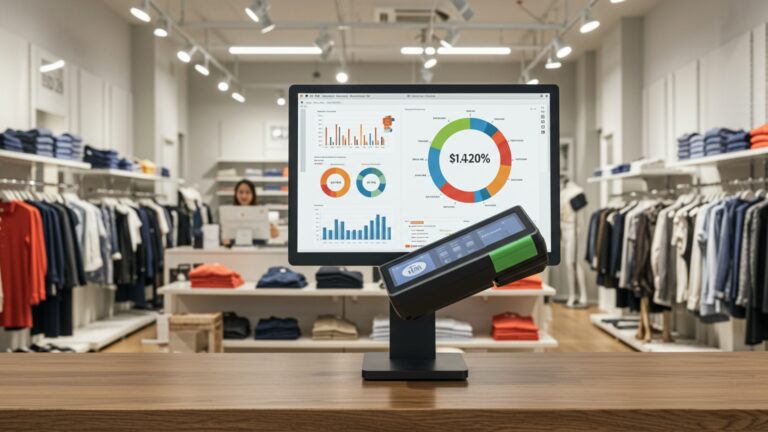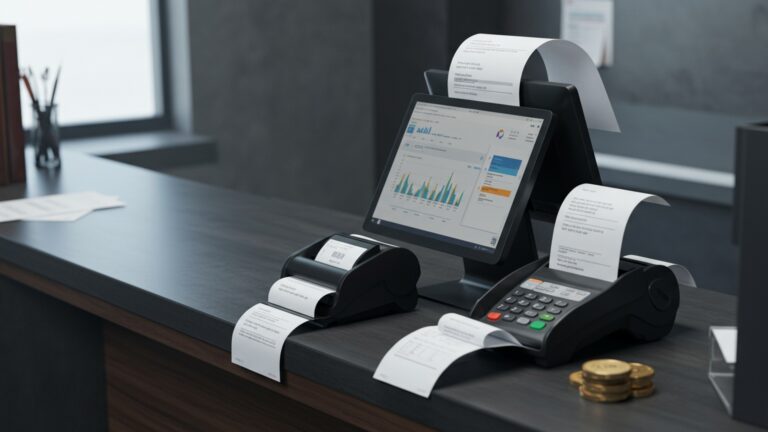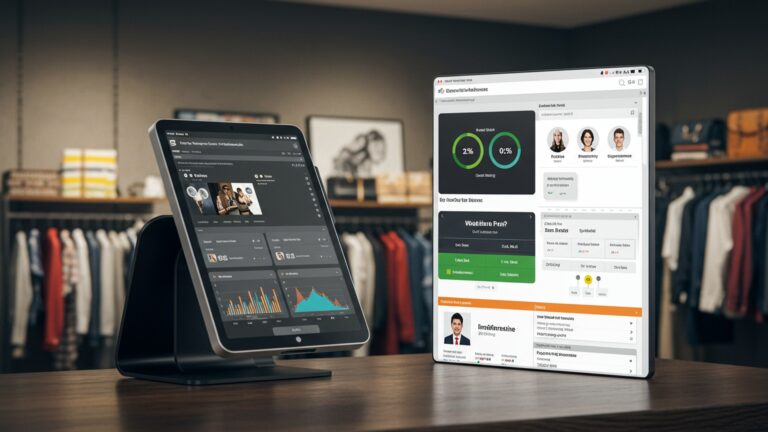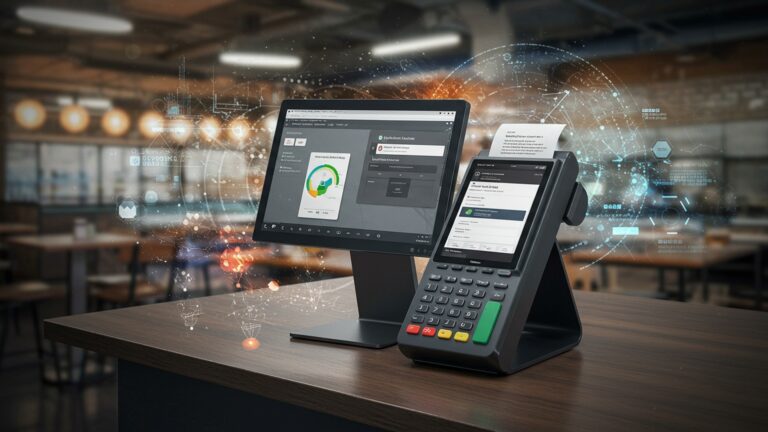7 Essential POS Features to Boost Your Ethnic Wear Store Sales
The vibrant ethnic wear market presents unique retail complexities, far beyond generic apparel. Managing intricate inventory across diverse styles—from handcrafted sarees to bespoke kurtas—demands more than a basic checkout system; it requires a specialized pos for ethnic wear stores. As consumer expectations for omnichannel shopping and personalized experiences surge, particularly during festive seasons and wedding events, traditional methods fall short. A modern POS transcends mere transaction processing, offering robust variant management for unique sizes and fits, real-time inventory visibility across online and physical channels. integrated CRM to track customer preferences for custom alterations and loyalty programs. This strategic shift from fragmented operations to a unified, data-driven platform is now essential for optimizing sales and enhancing the customer journey in a competitive landscape.
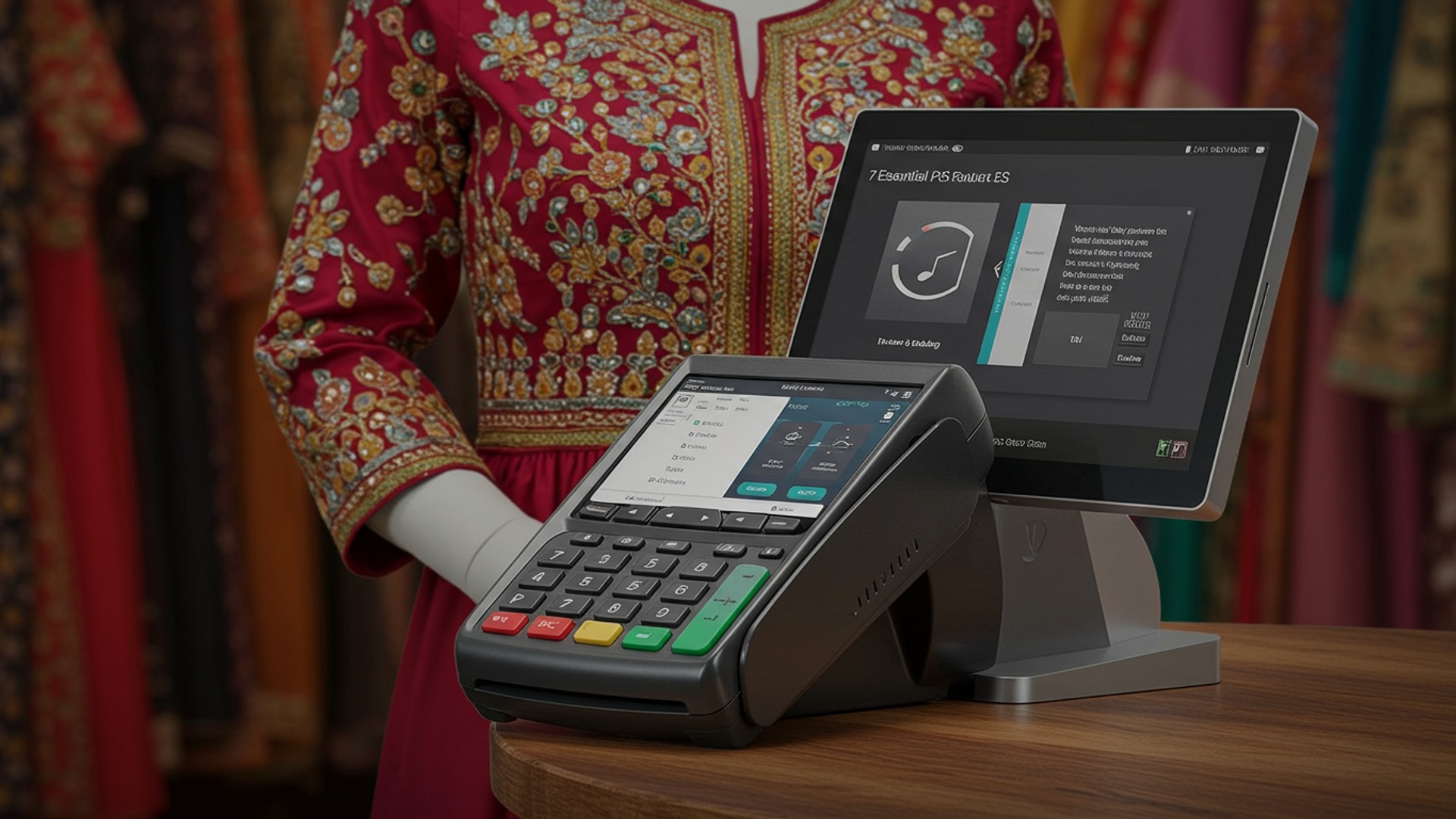
1. Intelligent Inventory Management with Variant Tracking
For any retail business, inventory management is the backbone of operational efficiency and profitability. But, for an ethnic wear store, this feature takes on a paramount importance due to the intricate nature of its products. Ethnic wear often comes with a vast array of variants: different sizes, colors, fabrics, embroidery patterns. sometimes even unique, one-of-a-kind pieces.
Intelligent inventory management within a
pos for ethnic wear stores
allows you to meticulously track every single item from the moment it enters your store until it’s sold. Beyond simple quantity tracking, it handles complex product attributes, known as variants, seamlessly.
- Detailed SKU Management
- Preventing Overselling/Underselling
- Optimized Reordering
- Managing Unique Pieces
Imagine a saree that comes in three different silk types, five color combinations. two border designs. A robust POS system can assign a unique SKU (Stock Keeping Unit) to each specific combination, ensuring accurate stock levels for every variant.
Nothing frustrates a customer more than being told a coveted lehenga is available, only to find out it’s out of stock. Accurate inventory prevents such disappointments. Conversely, it helps you identify slow-moving items taking up valuable shelf space, allowing you to plan promotions or clearance sales.
By analyzing sales data, the POS can alert you when stock levels for popular items are low, suggesting optimal reorder quantities. This is particularly useful for seasonal ethnic wear or during festival rush periods.
Many ethnic wear stores carry artisanal, handmade, or one-off items. The POS can track these unique pieces with individual identifiers, ensuring they are correctly accounted for.
Consider “Rani’s Boutique,” an ethnic wear store specializing in bridal wear. Their POS system tracks not just how many bridal lehengas they have. also the specific designer, fabric (e. g. , raw silk, velvet), embroidery type (zardosi, resham), size. color of each piece. When a customer inquires about a particular design, the sales associate can instantly check availability, even across multiple store locations or their online inventory, directly from the POS.
Invest in a POS that offers deep variant management. This level of detail is crucial for managing the diverse and often unique product lines characteristic of ethnic wear, directly impacting customer satisfaction and inventory turnover.
2. Robust Customer Relationship Management (CRM) and Loyalty Programs
In the world of ethnic wear, building lasting relationships with customers is paramount. Purchases are often significant, occasion-driven. highly personal. A powerful CRM integrated into your
pos for ethnic wear stores
can transform a one-time buyer into a loyal patron.
CRM functionality within a POS system captures and manages customer insights, including purchase history, contact details, preferences. interactions. Loyalty programs, often built into the CRM, reward customers for repeat business, encouraging them to return.
- Personalized Shopping Experience
- Targeted Marketing
- Building Loyalty
- Understanding Customer Preferences
Knowing a customer’s past purchases (e. g. , they bought a silk saree for a wedding) allows your sales associates to offer tailored recommendations for future occasions (e. g. , suggesting matching accessories or a complementary outfit for another family member).
With customer data, you can segment your audience and send personalized promotions. For instance, customers who frequently buy festive wear can receive early bird access to new festival collections.
Ethnic wear often involves emotional purchases. A well-structured loyalty program (points for every purchase, birthday discounts, exclusive preview events) makes customers feel valued and encourages them to choose your store over competitors.
Does a particular customer prefer cotton over silk? Are they always looking for contemporary designs or traditional classics? The CRM helps you record these nuances, improving future interactions.
Suppose a customer named Priya buys an expensive Kanjeevaram saree from “Ethnic Threads.” The POS records her purchase, contact info. notes that she was interested in traditional silk. Six months later, for her anniversary, the store sends her a personalized email offering a discount on new arrivals of traditional silk sarees, along with a special offer for matching jewelry. Priya feels recognized and appreciated, increasing the likelihood of her making another purchase.
Leverage your POS’s CRM capabilities to collect meaningful customer data. Design a loyalty program that resonates with your target audience, perhaps offering tiered rewards or exclusive access to new collections, to foster long-term customer relationships and repeat sales.
3. Advanced Sales Reporting and Analytics
Understanding what sells, when it sells. who it sells to is crucial for making informed business decisions. For ethnic wear stores, where trends can be influenced by festivals, seasons. regional preferences, advanced reporting from your
pos for ethnic wear stores
is invaluable.
This feature provides detailed insights into your sales performance through various reports and analytical dashboards. It can track sales by product, category, employee, time of day, day of week. even customer segment.
- Identifying Best-Sellers and Slow-Movers
- Seasonal and Festival Trend Analysis
- Employee Performance
- Optimizing Store Layout and Staffing
Pinpoint which designs, colors, fabrics, or price points are performing best. This helps in optimizing your buying and merchandising strategies. For example, knowing that pastel-colored lehengas are your top sellers can guide your next inventory order.
Ethnic wear sales are highly seasonal. Analytics can show peak sales periods for Diwali, Eid, weddings, or specific regional festivals, allowing you to stock up appropriately and plan targeted marketing campaigns.
Track individual sales associate performance, identify top sellers. interpret who excels in upselling or cross-selling. This can inform training needs and commission structures.
Sales reports indicating peak shopping hours or days can help you optimize staffing schedules and strategically arrange your store to highlight popular items during busy periods.
The owner of “Cultural Couture” reviews their POS sales reports monthly. They notice a significant spike in sales of lightweight cotton kurtas during the summer months and a consistent demand for heavily embroidered anarkalis during the wedding season (October-February). Armed with this data, they adjust their inventory orders, marketing campaigns. even store displays to capitalize on these trends. They also see that a particular sales associate consistently has the highest average transaction value, prompting them to share her sales techniques with other staff.
Regularly dive into your POS’s sales reports and analytics. Use this data to make data-driven decisions about inventory, promotions, staffing. store layout, rather than relying on guesswork.
4. Seamless Multi-Channel/Omnichannel Integration
In today’s retail landscape, customers often interact with businesses across multiple touchpoints – physical stores, websites, social media. marketplaces. For ethnic wear stores, offering a cohesive experience across these channels is not just a luxury but a necessity. A
pos for ethnic wear stores
with strong multi-channel integration is key.
Multi-channel or omnichannel integration ensures that all your sales channels (brick-and-mortar, e-commerce, social media shops) are synchronized. Inventory, customer data. sales data are updated in real-time across all platforms, providing a unified view of your business.
- Unified Inventory
- Consistent Customer Experience
- Click-and-Collect (BOPIS)
- Better Data Aggregation
If a customer buys a saree online, the in-store inventory should immediately reflect that sale. This prevents scenarios where an item is sold twice or a customer visits a store expecting an item that’s already gone.
A customer might browse a lehenga online, try it on in-store. then purchase it later from their phone. Omnichannel integration ensures their experience is smooth, with consistent pricing, promotions. access to their loyalty points regardless of the channel.
Allow customers to buy online and pick up in-store, a popular convenience. Your POS needs to communicate seamlessly with your e-commerce platform to manage these orders.
All customer interactions and purchases, whether online or offline, are recorded in a single CRM, giving you a complete 360-degree view of your customer.
“Desi Chic” operates a bustling physical store and a popular e-commerce website. Their integrated POS ensures that when a customer buys a specific kurta set online, the inventory count in the physical store updates instantly. Conversely, if a customer reserves an item online for in-store pickup, the POS flags it as reserved. This prevents stock discrepancies and allows customers to enjoy a flexible shopping journey, perhaps trying on an item in-store after seeing it online, or vice-versa.
Prioritize a POS system that offers robust integration with your e-commerce platform and other sales channels. This creates a seamless shopping experience for your customers and provides accurate, real-time data for your business operations.
5. Efficient Returns, Exchanges. Store Credit Management
Returns and exchanges are an inevitable part of retail. for ethnic wear, where purchases are often for special occasions or involve delicate fabrics, a streamlined process is critical for maintaining customer satisfaction. An advanced
pos for ethnic wear stores
can turn a potential headache into a positive customer interaction.
This POS feature allows for quick and accurate processing of product returns, exchanges for different sizes/colors. the issuance and tracking of store credit or gift cards. It automatically updates inventory and sales records.
- Hassle-Free Customer Experience
- Accurate Inventory Adjustments
- Managing Store Credit
- Fraud Prevention
A smooth return process can significantly impact customer perception. When a customer needs to return an item, a quick, no-fuss experience, especially if they’re looking to exchange it for something else, reinforces trust in your brand.
When an item is returned, the POS automatically re-adds it to your inventory (if resalable), ensuring your stock counts remain precise. This is crucial for high-value ethnic wear.
Many ethnic wear stores offer store credit instead of cash refunds, especially for sale items. The POS tracks issued credit, its expiry. allows customers to easily redeem it on future purchases, encouraging them to stay within your store.
The system can flag suspicious return patterns or prevent customers from returning items bought long ago without a receipt, helping to protect your bottom line.
A customer, Ms. Sharma, buys a designer gown from “Elegance Emporium” for a family event but finds it doesn’t fit quite right. She returns to the store a few days later. The POS quickly retrieves her original purchase details using her phone number or receipt. The sales associate effortlessly processes an exchange for a different size and color. If the new item is cheaper, the POS automatically issues the remaining balance as store credit, which Ms. Sharma uses immediately to buy a matching scarf. The entire transaction is completed in minutes, leaving Ms. Sharma satisfied.
Ensure your POS system has robust capabilities for managing returns, exchanges. store credit. A positive post-purchase experience can cement customer loyalty, even if the initial purchase didn’t work out.
6. Employee Management and Performance Tracking
In an ethnic wear store, sales associates are often more than just cashiers; they are stylists, advisors. relationship builders. Their expertise in explaining fabrics, fits. cultural significance can significantly influence a customer’s purchasing decision. A
pos for ethnic wear stores
that supports employee management is therefore a powerful tool.
This POS feature allows store owners to manage employee profiles, track sales performance, calculate commissions, manage shifts. monitor productivity. It provides insights into individual and team contributions.
- Sales Commission Tracking
- Performance Recognition
- Optimized Scheduling
- Access Control
Many ethnic wear stores operate on a commission basis, especially for high-value items like bridal wear. The POS accurately calculates commissions based on individual sales, motivating staff.
Identify your top-performing sales associates who excel in customer service, upselling, or handling complex transactions. This allows for recognition, rewards. the opportunity to learn from their best practices.
By analyzing sales data tied to specific employees, you can identify who performs best during peak hours or with certain product categories, helping to optimize staffing for maximum sales.
Manage different levels of access to the POS system based on employee roles, enhancing security and accountability.
At “Royal Attire,” a premium ethnic wear store, the POS system tracks each sales associate’s daily sales, average transaction value. the number of customers served. The manager notices that one employee, Rohan, consistently closes sales on high-value bridal garments. By analyzing Rohan’s interactions and sharing his approach to customer consultation and styling with the team, the overall sales performance of the store improves. Rohan also receives a well-deserved bonus based on his accurately tracked commissions.
Utilize your POS’s employee management features to empower your staff. Transparent performance tracking and fair commission calculations can significantly boost morale and drive sales performance in your ethnic wear store.
7. Customization and Tailoring Integration
A unique aspect of ethnic wear is the frequent need for alterations, customizations, or made-to-measure services, especially for garments like blouses, lehengas, suits. even sarees. A truly specialized
pos for ethnic wear stores
should seamlessly integrate these services into the sales process.
This advanced feature allows the POS to record specific customer measurements, tailoring instructions, alteration requests. custom design specifications directly linked to a sale. It can track the progress of these custom orders, manage associated costs. notify customers when their tailored items are ready.
- Enhanced Customer Satisfaction
- Streamlined Workflow
- Accurate Costing and Billing
- Reduced Returns/Complaints
Providing on-site or integrated tailoring services adds immense value. A POS that manages this ensures accuracy in measurements and timely delivery of perfectly fitted garments.
The POS can pass tailoring details directly to your in-house tailor or external service provider, reducing manual errors and saving time. It can generate work orders and track their status.
Easily add charges for alterations or customization services directly to the customer’s bill, ensuring transparency and accurate pricing.
By ensuring garments fit perfectly, you significantly reduce the likelihood of returns due to poor fit, a common issue with off-the-rack ethnic wear.
At “The Ethnic Wardrobe,” a customer purchases a beautiful anarkali suit. She needs the sleeves shortened and the waist adjusted. The sales associate, using the POS, records her exact measurements and tailoring instructions. The system generates a tailoring ticket, which is then sent to their in-house tailor. The POS also tracks the estimated completion date and automatically sends the customer an SMS notification when her perfectly tailored suit is ready for pickup. This integrated approach ensures the customer receives a garment that fits her flawlessly, enhancing her satisfaction and loyalty.
If your ethnic wear store offers or plans to offer tailoring or customization services, prioritize a POS system that can integrate these workflows. This feature not only adds convenience for your customers but also streamlines your operations, distinguishing your store in a competitive market.
Conclusion
Ultimately, a sophisticated POS system isn’t just a transactional tool for your ethnic wear store; it’s the strategic backbone empowering growth and enhancing the customer journey. From meticulously managing the diverse inventory of lehengas and sherwanis across various sizes and intricate designs to personalizing loyalty programs for your frequent festive shoppers, the right features transform challenges into opportunities. My personal tip? Don’t just look for basic billing; prioritize a system that can track custom alterations seamlessly and integrate with your online presence, reflecting the current trend towards omnichannel retail. By embracing these essential POS capabilities, you’re not merely upgrading your tech; you’re investing in an unparalleled customer experience, fostering repeat business. ensuring your unique ethnic offerings shine. Imagine effortlessly tracking a customer’s past purchases of silk sarees to recommend matching jewelry – that’s the power we’re talking about. Take the leap, evaluate your current setup. choose a POS that doesn’t just keep pace. propels your ethnic wear store confidently into a vibrant and prosperous future.
More Articles
7 Essential POS System Features for Your Saree Shop Success
Learn 10 Powerful POS Strategies for Multi Outlet Clothing Business Growth
How to Choose and Implement Cloud Based POS Software for Your Business
How to Select the Best POS Software in India A Comprehensive Guide
FAQs
Inventory for ethnic wear is tricky. How can a POS system really help me keep track of all my unique pieces, different sizes. fabrics?
A robust POS system makes managing your diverse ethnic wear inventory a breeze. It lets you track specific items by SKU, fabric type (like silk, cotton, georgette), size, color. even designer. You can easily see what’s in stock, what’s selling fast. what needs to be reordered, preventing stockouts of popular items and helping clear slow-moving ones.
My customers often have very specific tastes. Can a POS help me remember their preferences for, say, specific saree styles or bridal wear?
Absolutely! A good POS includes CRM (Customer Relationship Management) features. It allows you to build detailed customer profiles, noting past purchases, favorite designers, preferred colors. even special occasions they’re shopping for (like weddings or festivals). This helps you offer personalized recommendations and targeted promotions, making customers feel valued and understood.
What kind of sales insights can I actually get from a POS to boost my ethnic wear sales?
A POS provides powerful sales analytics and reporting. You can track your best-selling items, identify peak shopping hours or seasons, interpret customer spending habits. see which marketing efforts are paying off. These insights are gold for making smart business decisions, like optimizing your inventory, planning promotions. staffing your store effectively.
How does a POS make it easier to run a loyalty program and keep my customers coming back?
A POS system streamlines loyalty programs by automatically tracking customer points, purchase history. rewards eligibility. It can even automate reward notifications. This makes it effortless for customers to earn and redeem rewards, encouraging repeat business and building a strong, loyal customer base who will think of your store first for their ethnic wear needs.
I sell both in my physical store and through my website. Can a POS really connect these two channels smoothly?
Yes, a modern POS system often offers seamless multi-channel integration. This means your online and in-store inventory, sales. customer data are all synchronized. Customers can buy online and pick up in-store, or browse in-store and complete a purchase later online, ensuring a consistent and convenient shopping experience across all touchpoints.
Returns and exchanges for high-value ethnic garments can be a headache. Does a good POS simplify this process?
Definitely. A good POS system makes returns and exchanges quick and painless. It allows you to easily look up past transactions, verify purchase details. process refunds or exchanges efficiently. This reduces administrative time, minimizes errors. ensures a smooth experience for your customers, which is crucial for maintaining trust and satisfaction.
What about payments? What payment options should my POS be able to handle for an ethnic wear store?
Your POS should support a wide range of payment options to cater to diverse customers. This includes major credit and debit cards, mobile payment apps (like Apple Pay, Google Pay). potentially even popular digital wallets or installment payment plans, especially for higher-value ethnic wear items. Offering flexibility makes purchasing convenient and accessible for everyone.

